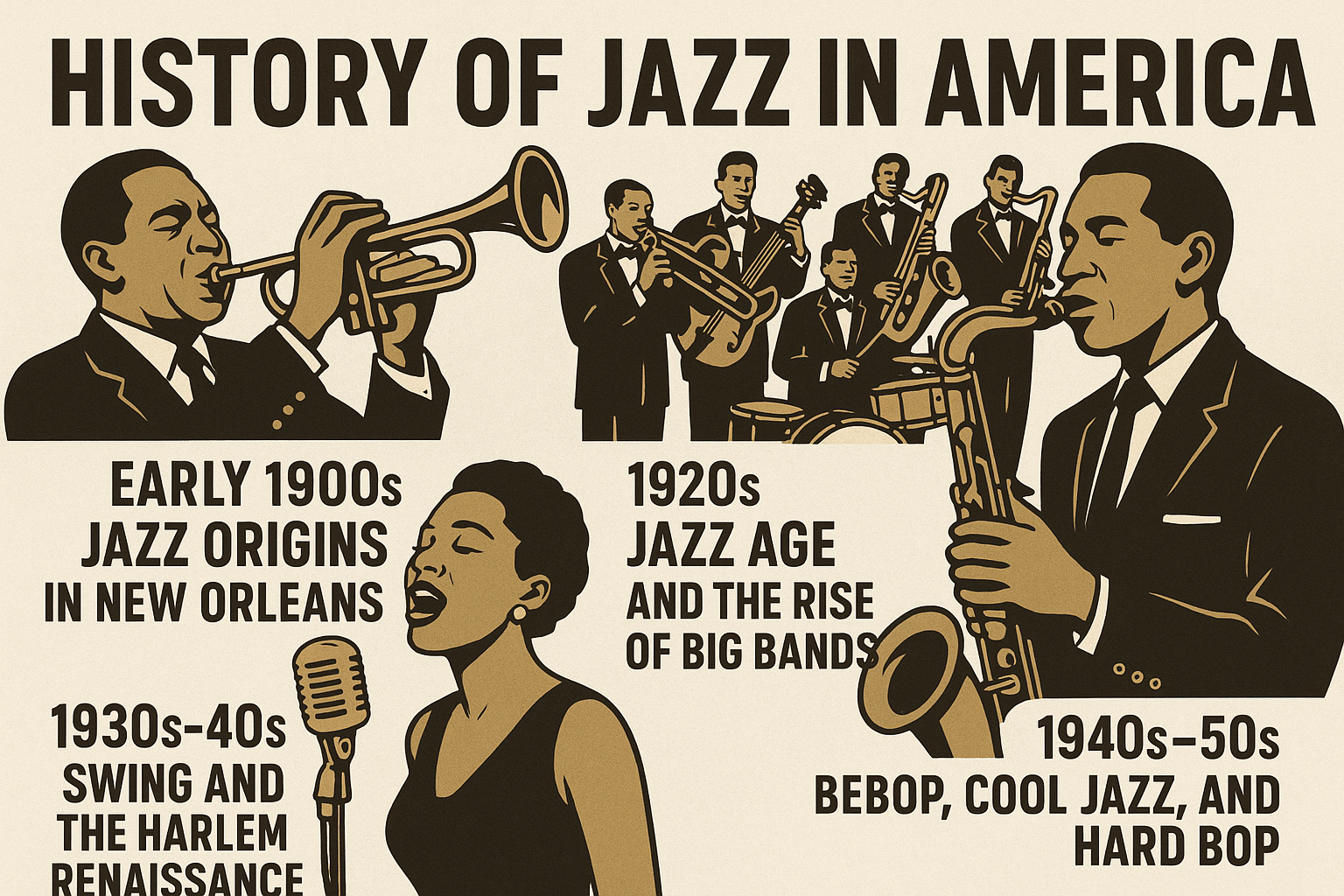The history of jazz is deeply rooted in the transatlantic slave trade. Jazz emerged in the United States in the late 19th and early 20th centuries, but its foundations stretch back to the forced migration of millions of Africans to the Americas during the transatlantic slave trade (roughly 1500s to 1800s). Here’s how they are related:
African Musical Traditions Brought by Enslaved People
- Enslaved Africans brought with them rich musical traditions that emphasized rhythm, call-and-response, polyrhythms, improvisation, and communal expression.
- These traditions survived through oral transmission and adapted over generations, often blended with the music of the Americas and Europe.
Cultural Retention and Adaptation
- Despite brutal efforts to suppress African identity, enslaved communities retained and adapted elements of their culture in the Americas, particularly through music.
- African drumming and communal music-making became foundational in spirituals, work songs, and field hollers — all crucial precursors to blues and eventually jazz.
Creolization and Musical Hybridity
- In port cities like New Orleans, cultural mixing between African, Caribbean, French, Spanish, and Indigenous communities gave rise to Creole musical forms.
- Instruments like the banjo (of African origin) and European brass instruments (introduced via military bands) came together in new ways.
- The result was a hybrid music deeply rooted in both African and Western musical practices — a key feature of jazz.
Blues and Ragtime as Forerunners
- The blues, emerging from African American experiences of pain, resilience, and storytelling, provided jazz with its emotive depth and scale structure.
- Ragtime, combining African syncopation with European harmony and form, offered the rhythmic complexity that jazz musicians expanded upon.
Improvisation and Resistance
- Improvisation, a central trait of jazz, parallels the adaptive survival strategies enslaved people used to retain identity and agency under oppression.
- Music became a form of resistance, resilience, and self-expression, which jazz carried forward — especially in early New Orleans jazz, swing, and later bebop and free jazz movements.
Summary
Jazz is a direct cultural descendant of the African diaspora’s musical legacy — a legacy shaped and scarred by the transatlantic slave trade. The rhythms, spirituals, blues, and expressive traditions rooted in Africa and forged in the crucible of slavery and racial struggle gave rise to jazz, making it not only a musical genre but also a living testament to survival, adaptation, and innovation.
